This summer, we supported 100 Maryland nonprofit organizations with funding through our CARES (Coronavirus Aid, Relief, and Economic Security) Act Emergency Relief Grants Fund. One of our grantees was The Bayside History Museum in Calvert County. We spoke to Grace Mary Brady, the museum’s Founder and President, about the museum and the positive impact of the grant.
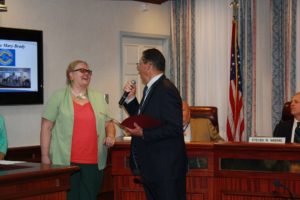
Q: What’s your history with the museum?
A: I founded the museum sixteen years ago. I’m the Founder and President.
Q: How did you decide to found the museum?
A: I saw, well let me think, the North Beach community has been my family home for 100 years and I saw the changes and just quickly acted to save some of the history of the towns.
Q: Can you elaborate on the changes?
A: I say North Beach, but we represent North Beach and Chesapeake Beach, two small towns side by side. Both towns were started in the 1900s as vacations resorts. Their attractions included an amusement park that was built out on top of the Chesapeake Bay: piers, fishing, restaurants, boating, etc…In order for someone to get to either of the towns, they had to come by railroad or steamboat, so that gets me to the changes because we no longer have railroad service, steamboat services, and the small cottages started to be remodeled to accommodate year-round residents.
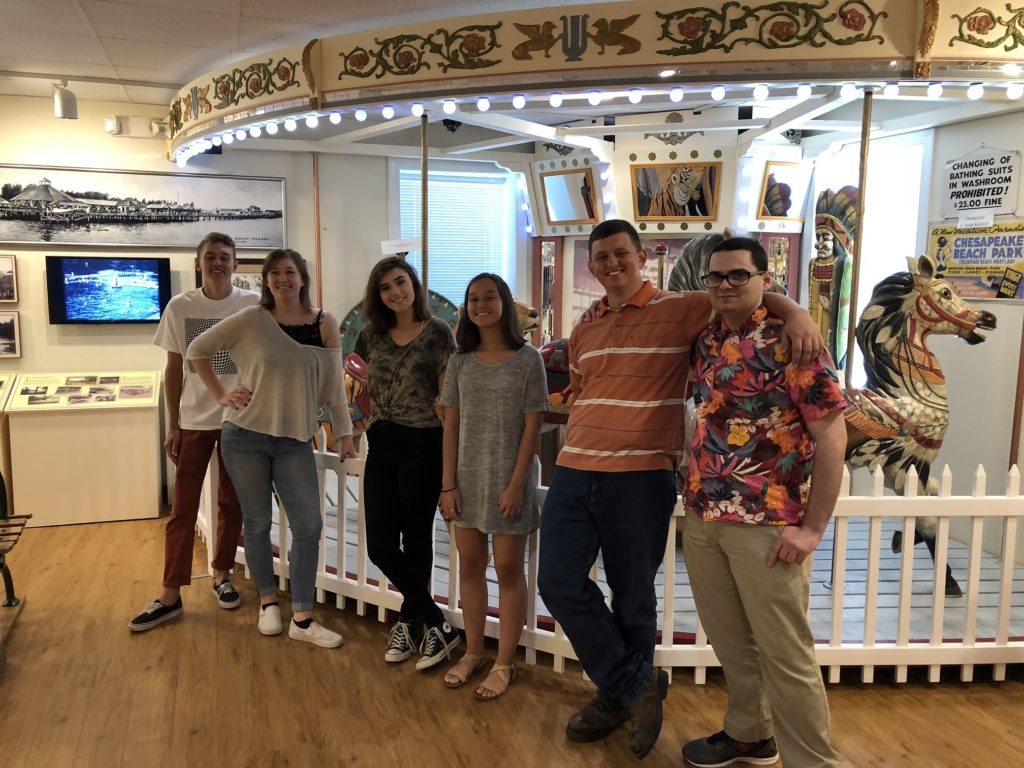
Q: How did you decide what the grant would go towards?
A: I have a waiting list of Huntingtown High School students that want to work at the Bayside History Museum. We only have enough funds to support six students working and this has been a challenging year with COVID as everything is closed and our students weren’t inside the museum to be able to work.
Q: How did they work since they couldn’t be inside the museum?
A: Our students [who are all in college at this point] are really young adults, future leaders, and we treat them accordingly so they’re very trustworthy. So I gave them a laptop and a scanner to scan at home and they met weekly on Saturdays on the parking lot of the Bayside History Museum to pick up new work and deliver the [past] week’s work.
Q: Why is the museum valuable to the region and state? What makes it unique?
A: We’re unique in a lot of ways because people come to visit for a variety of reasons. If they had visited the beaches prior to changes they come to remember things the way they were. So, when they see the amusement park exhibit, the boats, all the paleontology, it just evokes happiness for days spent at the beach. Both beaches were so incredibly busy all the time. We have a jukebox from the original Uncle Billy. Both towns were filled with restaurants and clubs when people came to visit.
The flipside of the coin is the most interesting to me. We have a sign in book and most of the visitorship comes from Northern Virginia. They come down and they want to take a day trip and we have a pet friendly boardwalk…we’re so incredibly busy because of the foot traffic. We’re only two blocks from the Chesapeake Bay. [North Beach is] a very walkable town, we call ourselves the Jewel of the Chesapeake, and the name really fits. We have something for every age. We have a senior center, senior living apartments, a boys and girls club, a museum, and an urgent care. So, the whole town is a big community.
Q: That’s special.
A: When we had the last hurricane, I couldn’t get out from where I live because trees were down. And people were calling me telling me that the museum was ok. They really care about their town [history]. They’re very proud of it.
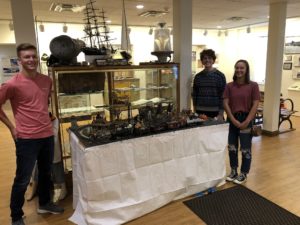
Q: How did it feel when you learned the museum received the grant? How did you react?
A: [laughs] I jumped up and down. I was very happy that the young adults that worked for us would have an opportunity in the middle of a pandemic crisis to still earn some money. I mean we have great kids that work at the museum and COVID has altered all of their lives in such a negative manner, they were sent home in March, they didn’t have the college experience that many of us had. Ryan didn’t get to graduate from high school, he didn’t go to prom, he didn’t get to go to his baseball championship. Everything this year has been a challenge. So, when I called them all they were so happy that they could work. They really miss being inside of the museum—especially three of them, they are so good with the visitors. Kat is number 1 with the children and children’s program. Wyatt talks to everyone, he’s the best docent ever. Olivia loves being the boss when I’m not there. These are kids who didn’t incur a lot of college debt. They want to work; they want to pay their way.
Q: Talk a little more about the students. What are their interests, how did they get involved? How were they involved with the museum before COVID hit?
A: Oh, sure. Olivia, Kat, Austin, and Wyatt shared their love of the drama club so did the school plays together. It’s really interesting because they’re just…I have the best kids that work for me. Olivia made all the costumes as well as acting. Wyatt is so talented with the piano when he was sixteen, he went down to St. Mary’s College to take lessons from Professor Gantz of Peabody Conservatory. Wyatt plays an old pump organ. Griffin did acting and stage props. Kat did acting and helped with prop creation. Ryan was not in the theatre but represented the sports world. That boy played baseball and disc golf, it tickled me, and I’d never heard about it.
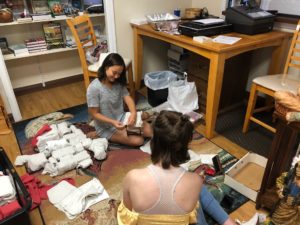
Q: How did the students’ interests translate to their work in the museum?
A: Ryan, Olivia, Austin, and Wyatt loved to create new exhibits with me. So, the Bayside History Museum doesn’t just do exhibits at the museum, we provide exhibits to the Calvert Library every two months. Everyone talks about all the bad things about kids but nobody talks about all the wonderful things. These kids volunteered and set up booths at dragon boat races, farmers markets, balloon festivals, stars and stripes event, “taste of” events, veterans’ events, and I could go and on. Most of these kids have been with me for years.
Q: What could the museum not have accomplished without the funding?
A: Three years ago, it was a priority of our Board to have all of the collections scanned. We have extensive, and I mean extensive paper collections. We have the North Beach town history, Chesapeake Beach town history, local stores, we just have ledgers, we have so much history that we have accumulated. Having them scan the 63,376 documents…what was so nice about that, and I always look at the glass half-full, they got so much more done this summer because they didn’t have visitors. When we’re open, the visitor is the priority. Scanning comes when there’s a little bit of downtime.
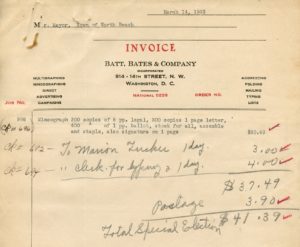
Q: Could you speak to the importance of scanning and digitization?
A: It’s paramount that all of your records be scanned. If there is a hurricane or tornado or flooding or other life-altering events, everything is lost if you don’t have a preservation plan.
Q: Is there anything else you’d like to share?
A: Could I put a plug in for one of the exhibits that we have?
Camp Theodore Roosevelt was the first Boy Scout Camp in the country. And [before the museum was closed due to the coronavirus], we were so busy with Scout Groups: we have Boy Scouts and Girl Scouts at the museum earning their badges and learning about Camp Theodore Roosevelt at Chesapeake. It was just amazing the numbers of boys that went to the camp.
Learn more about the Bayside History Museum here. Learn more about the CARES grants here. These grants were funded by the National Endowment for the Humanities as part of the CARES Act economic stabilization plan appropriated by the U.S. Congress. Disclaimer: The views and opinions expressed on our blog do not necessarily reflect the views or position of Maryland Humanities or our funders.

